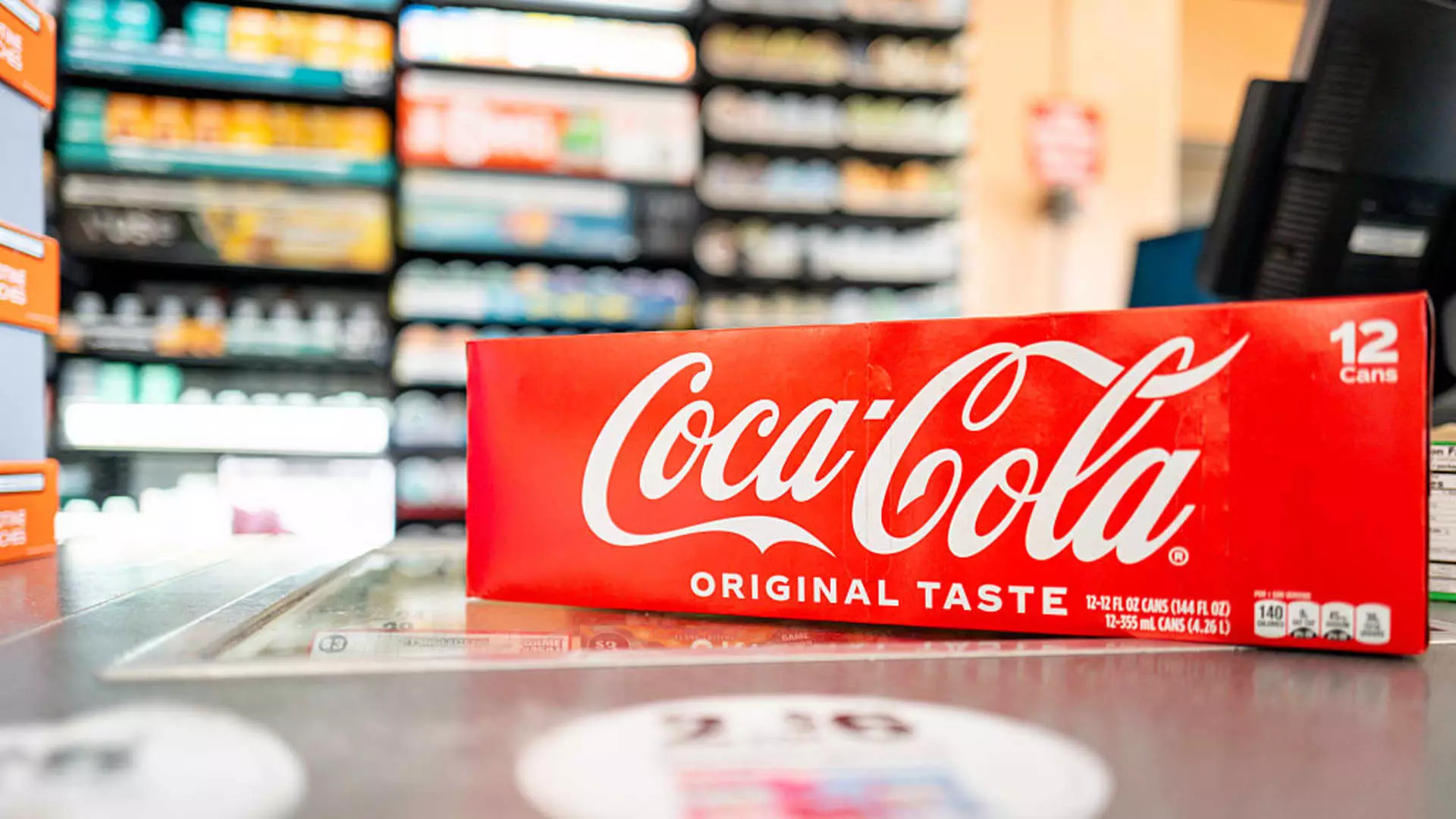Coca-Cola’s latest earnings report appears, on the surface, to portray a resilient and thriving global powerhouse. Beating analyst expectations, with earnings per share rising to 87 cents and revenue climbing slightly above projections, the company seems to demonstrate stability. However, beneath this veneer of success lies a troubling reality: declining volumes in key markets, shifting consumer preferences, and geopolitical headwinds reveal a fragile foundation that cannot be sustained by superficial growth figures alone.
What should concern observers is the disconnect between top-line results and the underlying consumer demand. While revenue growth appears positive, the fact that global unit case volume fell by 1% signals a decline in actual consumption. This suggests that Coke is relying heavily on price increases rather than organic demand growth. Such a strategy is unsustainable in the long term, especially when consumer confidence dips and economic uncertainties weaken discretionary spending.
The Illusion of Market Strength
A detailed analysis of regional performance underscores the precarious nature of Coca-Cola’s global standing. The company reports growth only in the EMEA region, with a 3% increase in volume, contrasting sharply with Latin America and Asia-Pacific, which experienced declines of 2% and 3%, respectively. North America, traditionally the company’s stronghold, recorded a 1% volume dip—a sign that even mature markets are not immune to economic pressures.
Furthermore, Coke’s reliance on volume growth in Europe as a rare bright spot masks an underlying vulnerability. While some markets are showing temporary improvements, they are often the result of strategic adjustments—such as targeted marketing and promotional campaigns—instead of genuine consumer demand. The broader picture indicates market saturation and the erosion of brand loyalty, which are difficult to reverse without radical innovation or diversification.
Consumer Trends and Strategic Shortcomings
Coca-Cola’s struggles are symptomatic of wider shifts in consumer preferences, particularly among younger generations who are increasingly health-conscious and skeptical of soda consumption. The stagnation in water, sports, coffee, and tea segments demonstrates the company’s difficulty in adapting its product portfolio to meet these evolving tastes. The flat volume in these categories reflects a failure to innovate fast enough or to position healthier options at the forefront of its strategy.
Adding to the complexity are geopolitical and socio-economic issues, such as inflation, social unrest, and the aftermath of health crises, which inhibit consumer spending and foster skepticism toward multinational corporations. The social media controversy regarding alleged treatment of undocumented workers temporarily damaged Coca-Cola’s reputation among certain demographics, causing a dip in sales—an avoidable PR disaster that highlights the perils of miscalculated public relations and corporate social responsibility.
Future Outlook: A Risky Confidence Play
Coca-Cola’s renewed focus on introducing products like cane sugar-based cola in the U.S. signals an attempt to cater to specific consumer niches, but it offers little comfort given the overall decline in core soda volumes. The company’s forecast for a modest 3% growth in earnings per share for the year reflects a cautious, almost defensive, stance—an acknowledgment that headwinds remain formidable.
Moving forward, Coca-Cola’s emphasis on superficial revenue targets is troubling. This approach risks prioritizing short-term gains over genuine market health. The company must confront its stagnant innovation pipeline and address declining demand with more substantial strategic reforms. Relying on price hikes and regional marketing tweaks cannot mask the fact that Coca-Cola is losing its grip on consumer loyalty and market relevance. Instead, it must focus on truly evolving its product offerings and responding to demographic shifts if it hopes to maintain its status as a global beverage leader in the turbulent new era.

